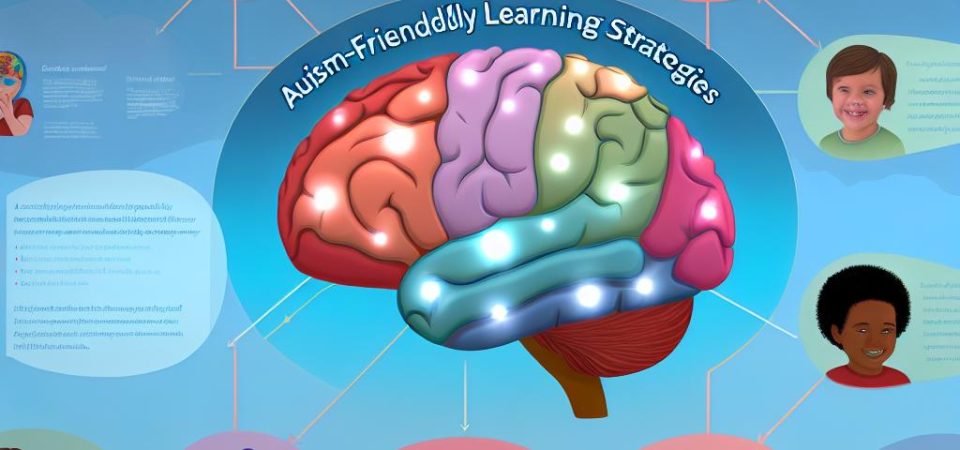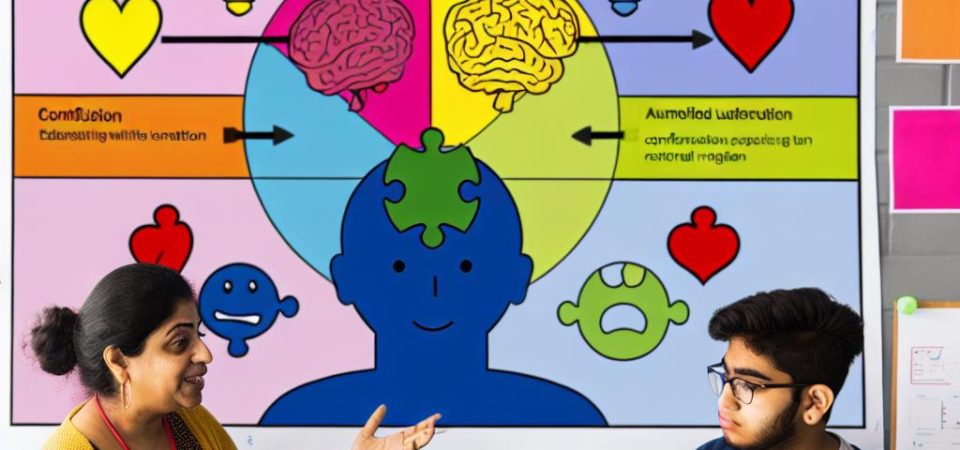Understanding Autism-Friendly Learning Environments
Creating an education environment that supports autistic students requires a deep understanding of their distinct needs and the implementation of strategies that cater to their sensory sensitivities and learning preferences. Autism Spectrum Disorder (ASD) is characterized by a wide range of symptoms that differ significantly between individuals, often necessitating personalized approaches to their education.
The Importance of Sensory Accommodations
Sensory sensitivities are prevalent among autistic students, necessitating modifications in the classroom setting. Changes aimed at reducing noise, controlling lighting, and managing odors can greatly improve concentration and lower anxiety for these students. Teachers are encouraged to use tools such as noise-canceling headphones and soft lighting to create a supportive learning environment. By doing so, the classroom becomes a sanctuary that minimizes overstimulation, allowing autistic students to thrive.
Adjusting the acoustics of the classroom can also be beneficial. The use of soft materials on walls and floors can absorb sound and reduce echoes, minimizing auditory distractions and helping students maintain focus. Another consideration is the arrangement of classroom furniture. Desks and seating arranged to create small, personalized spaces can help manage sensory input, offering students a comfortable and personalized setting where they can concentrate and learn effectively.
Structured and Predictable Routines
The establishment of structured and predictable routines provides a sense of security and stability for autistic students. The predictability of a structured routine helps in alleviating feelings of stress and confusion. Incorporating clear expectations and schedules makes it easier for students to understand and follow the daily sequence of activities, contributing to a smooth transition from one task to another. The employment of visual schedules or visual timetables serves as an effective tool in this setting, visually outlining daily activities and thereby aiding in comprehension and anticipation of subsequent activities.
It is also beneficial to keep transitions between activities as smooth and predictable as possible. Educators might consider giving advance warnings of impending changes to the schedule, which can help autistic students prepare mentally for the transition. Additionally, implementing a consistent routine for mundane activities, such as toileting or snack times, can instill a sense of normality and control over their environment.
Implementing Visual Supports
Visual supports serve as invaluable aids in enhancing comprehension and communication for autistic learners. Elements like visual timetables, charts, and flashcards represent tasks, instructions, or concepts in a visual format that is easily accessible. These tools prove especially beneficial when introducing new subjects or transitions within the daily routine. By offering visual cues, students can better understand, process, and retain information.
Expanding on these supports, digital aids such as tablets with visual apps or interactive whiteboards can be used to create engaging and dynamic visual presentations. Such tools enhance learning by offering tangible representations of abstract concepts, making subjects more relatable and easier to grasp.
Individualized Learning Plans
Given the diverse nature of needs among autistic students, individualized learning plans (ILPs) are critical for ensuring that educational methods and materials are tailored to each student’s unique strengths and challenges. Collaboration is key in designing effective ILPs, requiring coordination between educators, specialists, and families. This team effort helps ensure that the educational strategies align with the student’s personal requirements and foster an environment conducive to learning.
Within ILPs, educators can incorporate specific learning outcomes and adapt teaching strategies that play to the student’s strengths. Such plans might encompass adjusted timelines for completing tasks, alternative assessment methods to demonstrate understanding, or custom assignments designed to engage the student’s interests, all aimed at maximizing their educational achievement.
Enhancing Communication and Social Skills
For numerous autistic students, communication and social interaction present an arena where additional support becomes essential. Implementing specialized techniques to facilitate communication and aid in the development of social skills is crucial.
Augmentative and Alternative Communication (AAC)
AAC systems are invaluable for students facing verbal communication challenges. These systems, which range from simple picture boards to sophisticated electronic devices, offer varied communication methods that enable students to express themselves more effectively. By integrating these into the classroom, educators can foster a more inclusive and participatory learning environment, allowing students to contribute and engage more fully in both academic and social classroom activities.
Ensuring these systems are personalized to meet individual needs can optimize their effectiveness. Also, training sessions for both educators and peers are recommended to foster understanding and encourage active use of AAC by everyone involved. This collaborative approach helps bridge communication gaps, fostering a supportive atmosphere for learning and interaction.
Social Skills Training
Structured social skills training equips autistic students with the necessary tools to confidently navigate social interactions. Such training can include role-playing, the use of social stories, and participation in group activities that simulate real-world social situations. These methods enable students to learn and practice social skills in a controlled and supportive environment, which can boost their confidence and improve their ability to form relationships.
Continuous reinforcement and practice of these skills should be emphasized within daily classroom interactions. Creating opportunities for students to engage in peer-mediated activities, where they can observe and mimic appropriate social interactions, can further enhance their interpersonal skills.
Collaborative and Inclusive Learning
A collaborative learning approach that involves peers and promotes an inclusive atmosphere enriches the classroom environment by fostering empathy and understanding. Facilitating group activities that encourage teamwork and cooperation provides structured opportunities for autistic students to engage and socialize. By promoting group-based projects, teachers create a learning culture where students work together, leveraging mutual strengths and understanding diverse perspectives.
Peer mentoring schemes can also benefit both autistic and neurotypical students by breaking down social barriers and fostering acceptance and collaboration. Ensuring all students receive training and guidance on inclusivity results in a cohesive classroom where diversity is respected and everyone is encouraged to achieve their potential.
Conclusion
Incorporating autism-friendly strategies within educational settings can significantly impact the educational experiences of autistic students. Understanding their unique needs and employing strategies focusing on sensory accommodations, structured routines, enhanced communication techniques, and inclusive practices create an empowering learning environment. With effective implementation of these strategies, autistic students can thrive in educational settings designed to cater to their distinctive learning styles and communication preferences. This approach not only supports academic success but also promotes personal growth, fostering a more inclusive and aware society. For more detailed guidance on autism-friendly educational strategies, visit Autism Speaks or The National Autistic Society.



